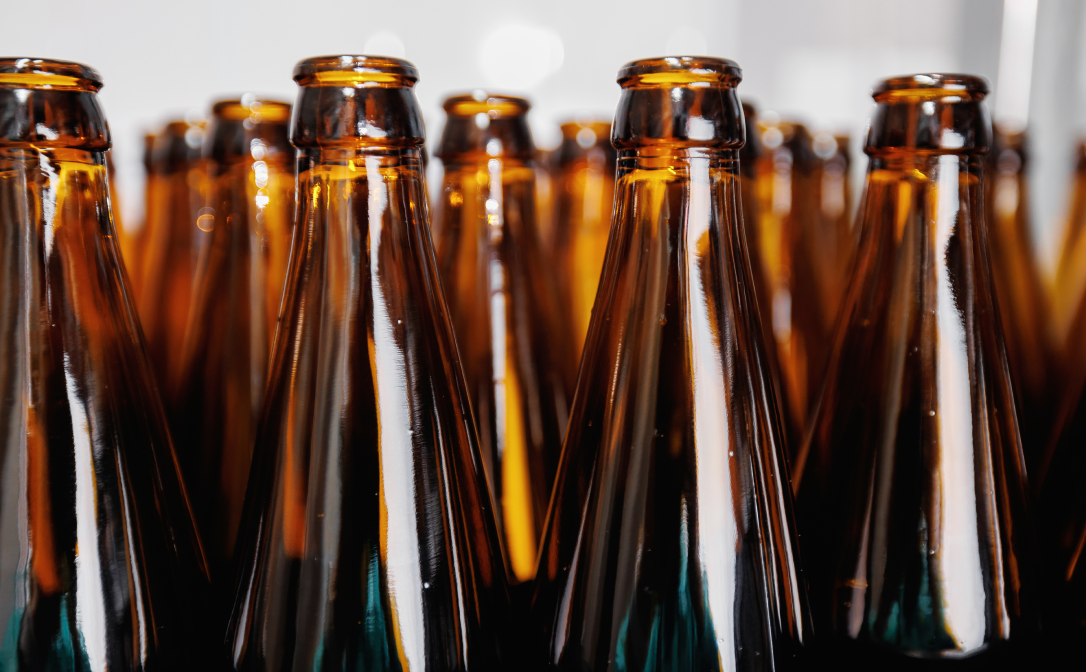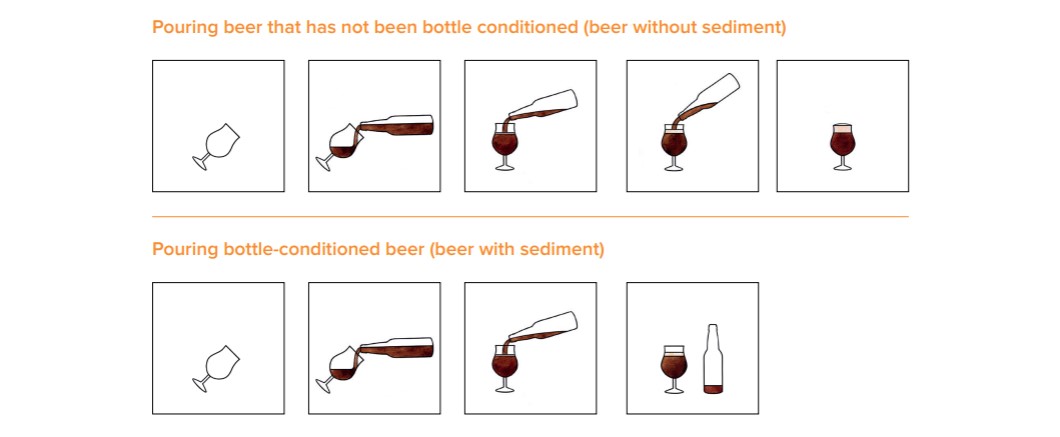Ever wondered why some beers taste fresher, crisper, and downright better than others? It’s not just about the brewing—it’s about how the beer is stored and served. From bottles to cans, kegs to glasses, proper storage and service make all the difference. With these essential tips, you’ll always serve your beer at its freshest and most flavourful.
Want to learn more about beer? Explore the WSET Level 1 Award in Beer and deepen your knowledge of styles, flavours, and service.
How to store beer
Beer begins to change as soon as it is brewed and can be easily damaged if it is exposed to oxygen, heat or light. Keep the following points in mind to keep your beer in tip top shape.
Drink beer fresh
Although some beers benefit from ageing, in most cases beers are at their best when fresh. Over time, hop aromas fade, bitterness softens, and unwanted flavours—like wet cardboard—can creep in. Check the ‘bottled on’ or ‘best before’ date when buying packaged beer to ensure it’s in its prime.
Keep beer cool
Cool temperatures are most beers' best friend. Storing beer in a cool, consistent environment—ideally refrigerated—helps preserve its freshness, flavour, and aroma. Even short-term exposure to warm temperatures can cause beer to go stale faster, leading to dull flavours and aromas. However, not all beers need to be kept icy cold. While lagers and lighter styles thrive in the fridge, certain ales and stouts can be stored and enjoyed at slightly warmer temperatures to bring out their full complexity. As a general rule, aim to keep your beer cool and consistent for the best results.
Protect beer from light
Light is a beer’s silent enemy. Exposure to sunlight or even artificial light can lead to "light strike," causing unpleasant aromas —a fault known as “skunking.” Packaging plays a critical role: cans and kegs provide complete protection, while brown bottles block most harmful light. In contrast, green and clear glass bottles offer little to no protection and should be stored in sealed boxes or kept in the dark to safeguard the beer’s quality. (You'll learn more about light strike in the common beer faults section below.)
Keep beer sealed
Keeping beer sealed not only preserves its carbonation but also protects its delicate aromas from being spoiled. Once a bottle or can is opened, it’s best to consume the beer immediately to enjoy its full flavour. Kegged beer has an advantage—it’s packaged with carbon dioxide, which keeps oxygen out and allows it to stay fresher for longer.

Brown glass offers the most protection from light.
Common beer faults
Bad storage or maintenance can result in undesirable aromas and flavours in beer. Some common faults to look out for include:
Staling
Staling happens to most beers over time and is accelerated by exposure to heat and oxygen. Hop aromas and bitterness fade, and the beer can take on off-flavours such as paper or wet cardboard notes.
Light strike (skunking)
Light strike is caused by exposure of hop compounds to light and gives an undesirable skunky, scorched hair or cat urine aroma.
Bacterial infection
Bacterial infection is commonly caused by bacterial growth in poorly maintained beer lines (hoses that connect kegs to taps), which can give beer a combination of undesirable flavours such as vinegar and rancid butter notes.
Serving beer
Glassware
There is a wide array of glassware available, and personal preference, tradition, and culture are all important considerations when choosing what glass to serve a beer in. In addition, there are a few general features that can be considered when choosing a tasting glass:
- Having a rounded bowl can help swirling
- Inward-sloping walls capture aromas at the top of the glass
- Narrow glasses can help head retention (foam stand)
Regardless of the shape, size or brand of glassware, it is essential that the glass used for serving beer is clean. It should be odourless and free of any residues, such as detergent or dishwasher salts, or dirt left from unclean glass-polishing cloths. If after the beer is poured you notice bubbles clinging to the side of the glass, this is a sign that the glass is not completely clean.
To learn more, take a look at this blog post on How to pick the best beer glass.
Keg beer
Pouring keg beer isn’t just for bartenders—whether you’re hosting a party or enjoying a home setup, a proper pour makes all the difference. Done right, it brings out the best in your beer, balancing flavour, carbonation, and foam. Here’s how to nail the perfect keg pour every time:
- Hold the glass in one hand and hold below the tap (faucet) at a 45° angle. The tap should not come into contact with the beer or the glass. Avoid touching the upper part of the glass with your hand.
- Open the tap fully and pour the beer down the side of the glass until the glass is around 70 per cent full.
- Move the glass into an upright position and continue to pour the beer directly into the centre of the glass to form a foam.
- When you have filled the glass to the correct volume, turn off the tap.

Bottled beer: opening and pouring
Bottled beer can feel like a ritual—and getting it right ensures the best drinking experience. Whether it’s a crystal-clear lager or a bottle-conditioned ale, these simple steps will help you pour with confidence.
Opening a bottle sealed with a crown cap
Steady the bottle with one hand. With the other hand, use the bottle opener to remove the crown cap in one single motion.
Pouring bottled beer
Some beers, like bottle-conditioned ales, contain yeast sediment at the bottom. While sediment doesn’t harm the beer, it’s up to the drinker whether they want it in their glass. If you’re serving a bottle-conditioned beer, pour carefully to keep the liquid clear, and leave the bottle on the table so the drinker can decide whether to swirl and add the sediment.
- In one hand, hold the glass at a 45° angle. Avoid touching the upper part of the glass with your hand.
- With the other hand, gently pour the beer down the side of the glass.
- When the glass is around 50–70 per cent full, return the glass to an upright position and continue to pour the beer into the centre of the liquid, creating foam.
- For beer that does not contain a sediment, keep pouring until all the contents of the bottle are in the glass.
- For beer that has a yeast sediment, pour the beer carefully, keeping it in the pouring position until the sediment is visible near the neck of the bottle. At this point, stop pouring to prevent the sediment from going into the glass.
- To avoid any sediment getting into the glass, a small amount of beer will always be left in the bottle.
In the case of weissbier and witbier, which are naturally cloudy/hazy, a sediment can settle in the bottle or can. It is common to reincorporate this sediment by gently rolling the bottle or can before opening, and then pouring the entire contents into the glass.

Service temperature
Serving beer at the right temperature can elevate its flavours and aromas, but personal preference always plays a role. While some people enjoy their lagers ice-cold, others prefer the complexity of a warmer stout. If you’re unsure, these general guidelines will help you get the best from every style:

From proper storage to the perfect pour, these small steps make a big difference in how your beer tastes. Whether you’re hosting friends, relaxing at home, or running a bar, mastering these tips ensures every beer is served at its best. Cheers to that!


